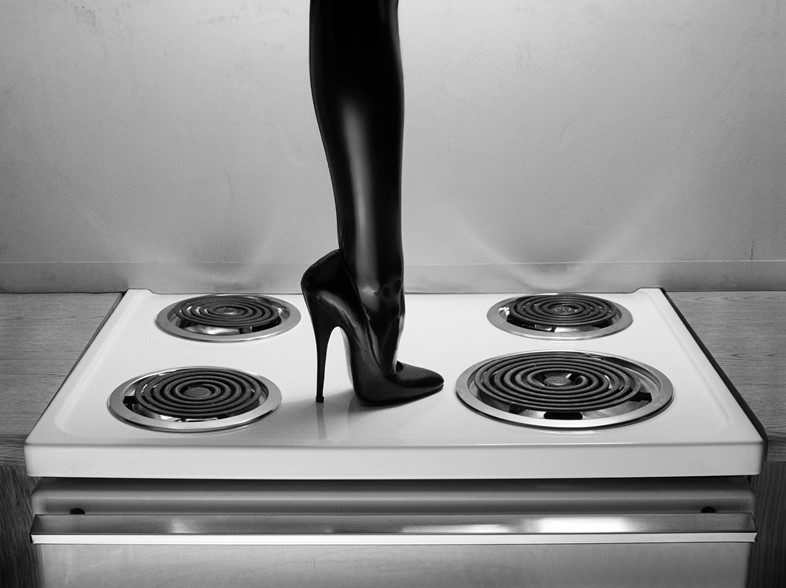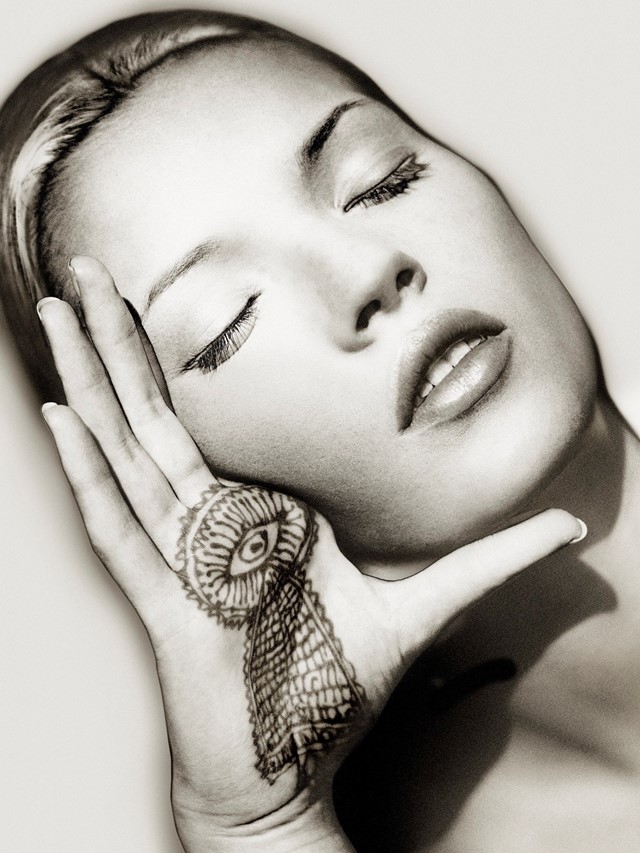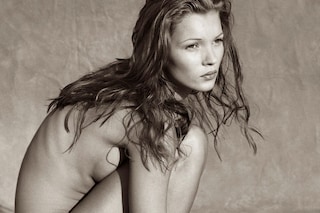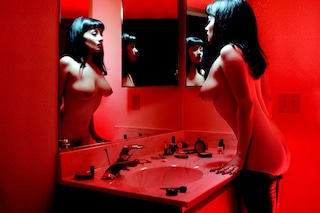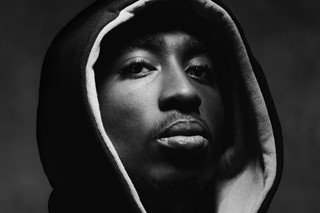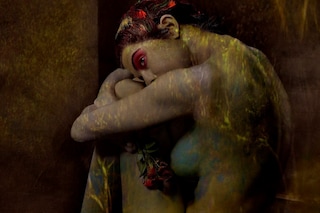Watson reflects on shooting Cindy Sherman and her pet parrot, the magic of David Bowie, Sade’s ‘Love Deluxe’ cover, and Kate Moss on her 19th birthday
Back in 1973, Scottish photographer Albert Watson got the call: Harper’s Bazaar wanted him to photograph the “Master of Suspense” for their holiday issue. The story was titled “Alfred Hitchcock cooks his own goose” and the assignment called for Watson to photograph the portly Brit presenting roast fowl on a serving dish. But Watson demurred and brought his own vision to bear – directing the legendary filmmaker in a series of photos depicting Hitchcock clasping an uncooked goose by the neck and throttling it with morbid elegance.
The photographs were pitch perfect and the world took note, launching Watson into the stratosphere of contemporary photography across every genre: portraiture, fashion, music, celebrity, still life, landscape, architecture, advertising, and fine art. Whether shooting Michael Jackson, Naomi Campbell, or Prince, King Tut’s artefacts, a Las Vegas dominatrix, or inmates at Angola State Prison – Watson deftly combines innovative thinking with a mastery of technique, making his work a visual symphony of rhythm, compositional harmony, and tonal melodies.
In celebration of his illustrious career, Taschen presents KAOS, an XXL collector’s edition of 1,200 signed and numbered copies that come in a clamshell box covered in faux chimpanzee fur – because, why not? Selections from the book are currently on view in an eponymous exhibition at Taschen Gallery, Los Angeles.
Watson’s ingenious approach, which includes a double exposure of Mick Jagger and a cheetah, and Michael Jackson dancing broken down into single frames, has set him apart from his contemporaries. With nearly 100 Vogue covers to his credit, Watson is still going strong at 75. What’s more, he prints all his photographs himself in his Tribeca studio. It is rare to see the hand of the artist in the photograph, but Watson understands that the process continues long after the shutter clicks. He speaks about how to master the art of photography.
“I was not one of these photographers where they love technical things. I was interested in the end product” – Albert Watson
FIND THE BALANCE BETWEEN TECHNIQUE & VISION
“When I am talking to young photographers I have this analogy: When you first get into a car it seems impossible. You’ve got to look in your mirror, switch on, coordinate clutch and breaks, be aware of what’s behind you and what’s in front of you – so it seems absolutely impossible and just too difficult but if you want to drive, you’ve got to learn it.
I was old school. I felt a responsibility to learn the techniques of photography. The technical was painful for me. People say, ‘But you’re so fluent’, but it wasn’t like I loved it. I was not one of these photographers where they love technical things. I was interested in the end product. Ultimately it was what the car can do for you and where you are going to go.
Get the technical thing out of the way and become so fluent in it that there is no stress. There’s always the element that something could go wrong – so there’s a balance there between that. If you have an arsenal inside your head, it makes it much easier for you to solve problems and to be able to work under different circumstances.”
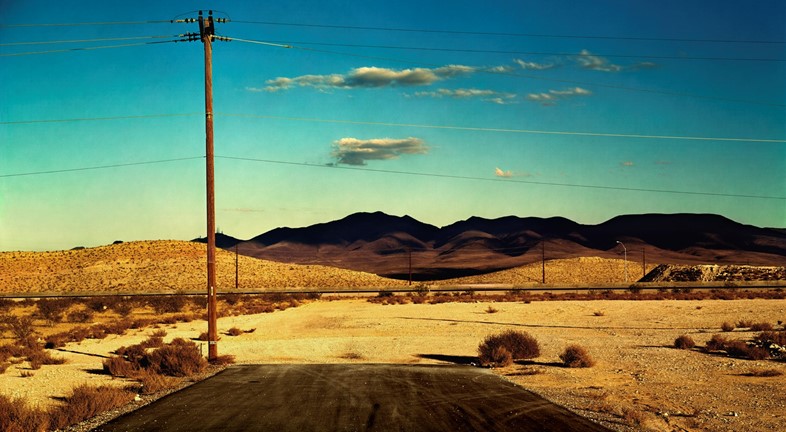
IT’S ALL ABOUT CONTROL
“Printing is so important. Nowadays so many photographers just send it out to a lab but when you do everything in-house, you have a real connection with who took the picture because he is printing it. I might think a one-minute exposure might be pretty good but let’s say that I got it wrong, which is possible, and that one minute should have been thirty seconds – what that means is when it comes up in the developer, it’s too dark. A technical person would take the piece of paper and throw it out.
What we would always say was, ‘We’ve now gone to the expense so what can we get out of this even though we made a mistake?’ But we would develop that piece of paper fully and the density might be too heavy so we would look into that image and see what was in it. A technical person is not going to do that.
The person who is not printing his own print would never know about that dark print – the one that was too heavy, too mysterious. Sometimes you even learn something about that exposure and you look at it and say, ‘It looks so beautiful, the jewellery around the neck.’ It’s a matter of analysing those things as you go on so that you are in control. It’s all about control – and not letting somebody else interpret what your work is.”
“It’s all about control – and not letting somebody else interpret what your work is” – Albert Watson
COLLABORATE WITH GREAT SUBJECTS
“I went to Cindy Sherman’s studio and she was wonderful, charming, and funny. Her studio is like a surgery; immaculate and beautifully organised. She has endless drawers with prosthetics in them. You just go in and say, ‘Let’s see what we can do with her.’
We were doing a lot of shots and I asked, ‘Who’s that in the other room?’ It was her parrot. She said, ‘If I put on some mascara, the parrot will eat off the mascara from my eyelashes.’ I said, ‘What?!’
I told her, ‘I certainly don’t want something to happen to you,’ and she said, ‘It won’t. He’s very careful.’ She put the mascara on and the parrot came over and very delicately lifted the mascara off of her eyelashes. It was very odd (Laughs). I thought, ‘Wow, that beak next to an eye is scary.’
After that, we did a whole bunch of different portraits including one of her on the roof with her wearing one of her bird masks. It was winter, dark, with the snow coming down – very New York. The one in the book is a Polaroid that came out of that shooting.”
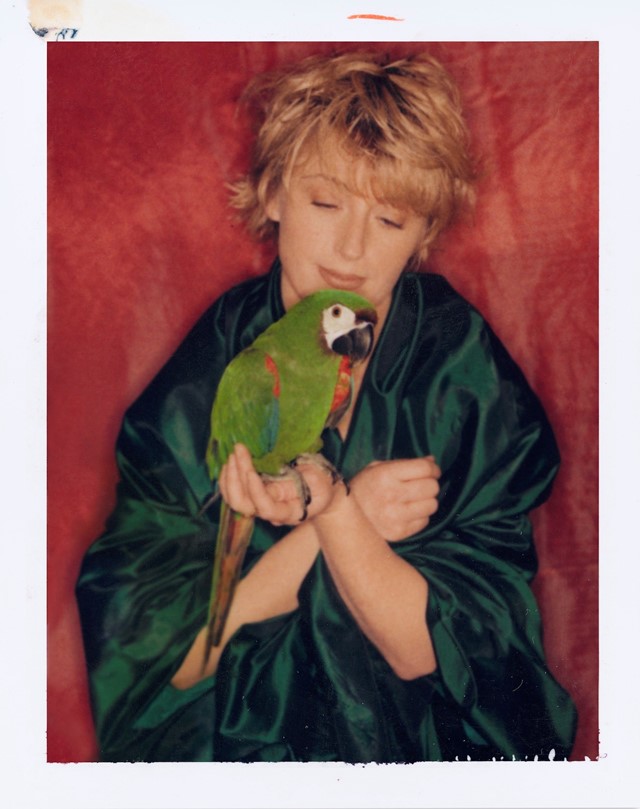
ALWAYS HAVE A PLAN
“I had a very interesting day with Kate Moss where I did all of these pictures. She was fairly new. We actually shot with her for 14 hours and she didn’t complain at all. I was moving through all of these shots very quickly but I did have a plan. It was a beauty shoot for German Vogue at a rented house in Marrakech in January. We were there for the weather. I started shooting with her at seven in the morning and shot with natural light until 5:30 in the evening, and then we took more photos in an improvised studio in the house.
The henna shot was done in the studio. We were in Morocco and they had a local woman come in who did tattoos and she did that, and we used it in the shot. Kate was tremendous. She was patient and supportive. When we finally got to the end, she said, ‘Today is my 19th birthday.’ I said, ‘Well, now I feel terrible because we had 14 hours of solid work,’ and she said, ‘It’s fine. I enjoyed it.’”
“We actually shot with (Kate Moss) for 14 hours and she didn’t complain at all” – Albert Watson
CREATE THE PERFECT THEME
“I did a day with David Bowie. I think he came at 10am and we finished at about 7pm. I had spoken to him before the shoot and told him, ‘I’ve got quite a lot of surreal things that I want to do with you.’ I thought that worked for him. Originally he was a mime performer, so the whole idea fit perfectly.
He was absolutely a pleasure. He contributed to the shooting. He brought some great clothes and that helped me a lot. Sometimes you will get someone who will come in and just want to be told what to do: Sit there. Lean on your hand. Adjust your glasses.
David was someone who would settle into something. He knew the camera and he knew what to do. He understood the situation that you would put him in and he would add another layer to it.”
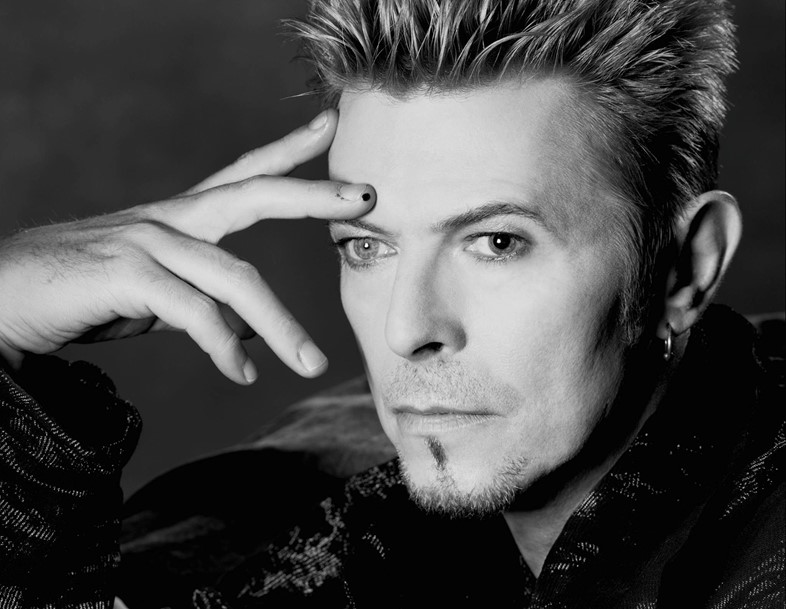
FINESSE THE ESSENCE
“I have known Sade very well for years and years now. Everybody thinks of Sade as being sexy because of the voice, but she is terrified that people think she is trying to be sexy. She’s a very conservative dresser.
I was doing both beauty shots and portraits of her for Love Deluxe, and I said, ‘I have this idea of you being nude.’ She said, ‘That’s not me.’ I said, ‘I know it’s not you but since you’re employing me to take your picture, the picture belongs to you. I have this idea of doing a metallic tint on your skin, a gold, and then doing the picture in black and white, and then toning the picture back into some gold from the black and white.’
We went ahead and did the picture. She took one look at the Polaroid and said, ‘Well, look, it’s a beautiful shot but that would never be on one of my album covers.’ I said, ‘Well, pity, it’s a beautiful shot.’
She went to shower to remove the gold paint and then three members of her band came up along with the manager. They grabbed a hold of me and said, ‘Alright, just so you know, that shot you just did will be the cover of the next album.’”
DISCOVER A SOURCE OF CONFLICT & TENSION
“I’ve photographed a lot of rappers with guns where they proudly display it but in this the photo, Tupac is holding the gun quite close to him. You can see there is a quiet confidence in him. He’s not insecure. He was a strong persona. In the movie (Juice), his character is definite, and in that picture he is definite. He said, ‘I think it’s wrong if I am waving the gun around.’ I said, ‘I agree with you. It’s more that your character doesn’t want to use a gun but you have it.’
That’s where that shot came from. I’ve done a lot of rappers like 50 Cent and Slick Rick, a whole bunch that I’ve done with guns but with Tupac that was specifically for the film. He was a good actor – a natural. He was a handful but I got on well with him. “

TURN YOUR SWITCH ON
Breaunna is a professional dominatrix working in Vegas. She was someone we discovered and she was just phenomenal in front of the camera. She was working like a seasoned supermodel who had been in front of the camera for years – and she had never been photographed before.
We contacted her, put her up in a motel in Vegas, and spent three days with her. Three days when you have a crew and do 14-hour days – you can get through a lot of pictures. When you have a girl like that, who has all her own stuff, and you’re in a low-rent place like Budget Suites, it can work out quite well.
After I did a shot of her at the refrigerator, there was a stove that I liked and I somehow got the idea of doing her heel on the stove. There was something surreal about when it was a single shoe. People asked me, ‘How did you know to do that?’ I don’t know. Sometimes there’s not an answer.
People ask, ‘Did you plan to do that shot?’ Well, no, but I was in an environment that allowed that shot to happen. When you see something like that, you have to latch on to it right away. The minute you are involved in a shoot, you should be switched on the whole time.”
“People asked me, ‘How did you know to do that?’ I don’t know. Sometimes there’s not an answer” – Albert Watson
ADAPT TO YOUR MILIEU
“Grace Coddington once asked me, ‘Does every shot have to be monumental?’
At that point, when you are trying to create great work you turn around and say, ‘Yes, absolutely it does because that’s why we’re here.’ That was part of the way I was moving. Shots were becoming heavier and heavier, stronger and stronger – but you have to be careful with that. You might say that’s a good thing but you have to look at fashion magazines. Sometimes the pictures becoming too heavy, too strong, too thick is not necessarily appropriate for a lighter look at clothing, especially if every shot is done that way.
“I knew what she meant but I was on a mission to make shots stronger and that was just the way it was going to be. I was running a parallel world at this point in fine art and was beginning to develop my own projects that were completely free. When you step back to do fashion photography you try to bring some of that essence into it. You’re trying to make the shots important.
Some people didn’t like the shots at the time but now they quite like them. When your life goes into books, galleries, and museums, those kinds of shots that I have done, they don’t sit well in a book. People ask, ‘Why did you put that in?’ and I tell them, ‘Well it’s light and easy.’ Then they use the classic line: ‘Well, you’ve got much stronger shots than that.’
Every so often there is a journey a shot will take from a magazine to a book, a book to a gallery, a gallery to a museum. It’s not so easy for a shot to make it all the way through – but if the shot is strong, it will.”
